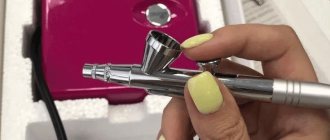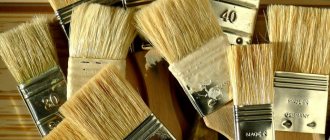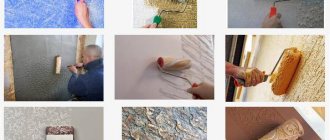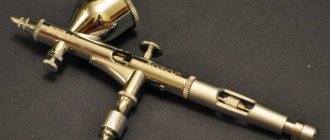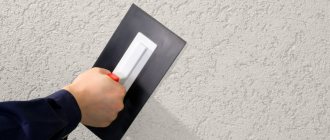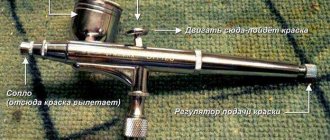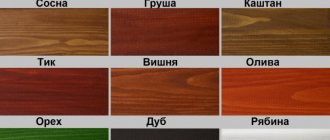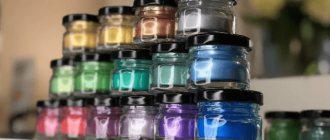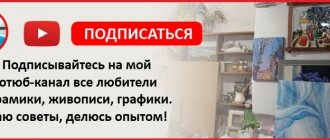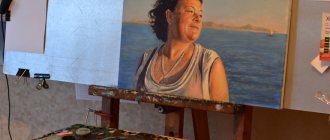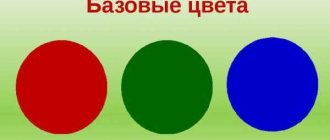An airbrush is a pneumatic painting tool designed for applying paint by spraying.
Its feature that immediately catches your eye is its miniature size, comparable to a ballpoint pen or marker.
Almost all existing types of airbrushes are used in airbrushing - one of the techniques of fine art, used in body art, painting on the walls of buildings, to create drawings on various surfaces.
Moreover, it is quite difficult to achieve high results without using airbrushes.
Necessary equipment for airbrushing
An airbrush is a modern alternative to painting with paints, which became possible after the invention of special accessories. The standard set is a small suitcase that is equipped with all the essentials:
- A set of several paints;
- Airbrush;
- Air compressor;
- Soft hoses;
- Bright lamps for lighting.
The artist can buy ready-made kits already fully assembled or assemble his own kit based on individual needs.
In ready-made kits, the manufacturer offers the buyer a standard set of paints. It is often not enough to create truly bright and colorful drawings, so experienced artists additionally acquire a large palette of paints.
Beginners who are just starting to study the question of what airbrushing is are still recommended to use starter kits, which are complemented by accessories and teaching aids. Advanced artists prefer professional kits, but they will also not be enough to work with an airbrush, so fill the suitcase with additional accessories at your discretion.
An airbrush is a modern alternative to painting with paints, which became possible after the invention of special accessories.
conclusions
To become a good artist, you need to constantly improve. You definitely need to carefully study your mistakes, look at ready-made airbrush drawings and constantly practice. An aspiring artist who wants to make a living by airbrushing must definitely study special manuals and learn to master the airbrush flawlessly.
Sources
- https://InfoKuzov.ru/material-instrument/chto-takoe-aerograf
- https://InfoKuzov.ru/material-instrument/aerograf-svoimi-rukami
- https://kuzov.info/princip-raboty-ayerografa/
- https://tehnika.expert/dlya-remonta/aerograf/ekspluataciya-ustrojstva.html
- https://topreit.ru/aerografiya/probuem-sebya-v-iskusstve-aerografii/
Airbrushes - what they are and how to use them
The main task of the device is to create a smooth transition between different colors. This is possible due to its similarity to a conventional spray gun. So, what is an airbrush? It is a combination of several elements:
- Container for coloring composition;
- Start button;
- Adjustment unit;
- Nozzle;
- Needle.
The main task of the device is to create a smooth transition between different colors.
Device
The airbrush device is structurally similar to a spray gun, which is widely used for all paint and varnish work in automobile workshops. The device is intended for fine work, where the emphasis is on the minimum size of lines drawn with a minimum thickness of paint applied to the working surface.
The standard package includes:
- container for paints;
- trigger buttons or handles;
- control unit (button);
- replaceable nozzles;
- needle.
Additional elements of the machine, which are designed to simplify the artist’s work, include:
- device stand;
- airbrush holder;
- compressor;
- air hose;
- filter for the working environment;
- The airbrush is equipped with replaceable nozzles. The thickness of the applied paint spot and its width depend on the size of the spray unit. The compressor supplies air under high pressure, allowing you to quickly paint large surfaces and create subtle color transitions and smooth lines.
A high-quality tool comes complete with at least two types of attachments, nozzles of various diameters and several replaceable needles.
Airbrush characteristics
To evaluate the technical characteristics of an airbrush, it is important to know what an airbrush is, the principle of its operation and paint spraying. The device makes it possible to regulate and control the supply of the solution so that the paint can be applied in the thinnest layer to the surface. If you follow all the rules, the sprayer creates a narrow jet not exceeding 2 mm, which means the master does not need to use a respiratory mask.
There are also 2 types: single or double.
- When operating a single-action device, the master controls only the air pressure. Such a tool is quite primitive, available in stores at a fairly budget price, easy to clean and not oversaturated with additional elements;
- Double ones are a little more complicated: here the artist controls the flow of air and paint. With such a device, small spot work becomes possible, but among the disadvantages it is worth noting the high cost of the device, and due to the large number of additional elements, it is more difficult to clean.
The device makes it possible to regulate and control the supply of the solution so that the paint can be applied in the thinnest layer to the surface.
GOST
For pneumatic spray paint sprayers, the technical specifications are contained in GOST 20223-74, however, its validity has now been discontinued.
Marking
Typically, there is a marking on the side of each airbrush, which may contain information about the technical characteristics, country, date of manufacture and/or manufacturer.
There is no unified marking system for airbrushes, so the decoding of the inscriptions on each specific model must be looked at in the corresponding manufacturer’s tables.
Criterias of choice
The artist selects a tool exclusively for his needs. Most often, budget options with a thin nozzle and needle are used, which even a beginner can handle. However, for professional work you will have to take into account the following criteria for choosing an airbrush:
- Capacious container for dye from 2 ml;
- Material for seals and nozzles - it is preferable to choose one with Teflon coating;
- The diameter of the nozzle for an airbrush is from 2 mm;
- Main parts (consumables) can be replaced;
- Protective elements against the effects of used reagents;
- Ability to adjust pressure.
If you take into account all the listed criteria when purchasing, the work will be much easier, and the artist will be able to paint on all surfaces.
The artist selects a tool exclusively for his needs.
Best lists
In addition to the models presented above, we have created another TOP airbrushes that differ from each other in their special characteristics. This rating includes:
- For beginners.
- Price-quality ratio.
- Multifunctional.
Let's take a closer look at the range of models presented.
Jas 1113 – for beginners
The best device for getting the desired result in the shortest possible time. The mixing type is internal, so you get a perfect job right after the first application. The coating application is quite soft, and the device itself has a very ergonomic design that does not interfere with the production of art. The nozzle is 3mm. Ideal for the initial stages of work.
Price tag: from 1312 to 1700 rubles.
airbrush Jas 1113
1178 JAS – price-quality ratio
The device is equipped with an aluminum coating. The Air Control unit ideally helps to adjust the air supply in the airbrush itself and the width of the drawing line. With this technology, you can completely control the process and the subtlety of the work. The set includes 3 replaceable paint containers (2, 5 and 13 ml), and the nozzle diameter is 0.3 mm. Ideal value for money.
Cost: from 1213 to 1500 rubles.
airbrush 1178 JAS
Jas 1122 – multifunctional
A pistol-type airbrush with a very wide range of works. Mounting on the side allows you to paint at any angle of inclination of the device itself and install the container on both the left and right. The kit is equipped with two paint containers (7 ml and 10 ml). The device also has a maximum paint supply limiter. Nozzle size – about.3 mm.
Price: from 2250 to 3000 rubles.
airbrush Jas 1122
What paint to use
Before starting, it is important to prepare certain paints that will make the lessons as accessible as possible. It is important to consider the type of material being processed and the pressure that the device produces and why the airbrush is needed. The most popular are:
- Polyurethane, made with water. They create a durable, quick-drying layer that can withstand temperature changes. When painting surfaces, the artist can be without a protective mask, and airbrushing can be done both indoors and outdoors. Most popular when drawing on paper or for manicure;
- Acrylic water-soluble compounds also perform well on all surfaces. In this way you can paint walls, fabric, plastic, make complex patterns or even draw on the body of a car. These paints are the best choice for beginning artists, as they dry quickly, are easy to work with, and are completely harmless;
- Solvent acrylics require the use of a solvent. When painting with this type of paint, it is necessary to protect the respiratory tract with a respiratory mask, since toxic components are used in its production. Solvent formulations are popular in professional workshops;
- Nitroenamel - suitable for auto airbrushing. Professional artists work with it, but with a certain level of skill you can get an unusual effect that is impossible when working with acrylic compositions. The main disadvantage of paint is considered to be high toxicity, so it is important to ensure good ventilation in the room, as well as use personal protective equipment;
- Watercolor is used when painting on paper and plaster. It is safe, and the colors are easy to mix, allowing you to get the desired shade. The first test drawings when working with an airbrush are made with watercolors.
Before starting, it is important to prepare certain paints that will make the lessons as accessible as possible.
What airbrush accessories might you need?
Actually, accessories are not so necessary for airbrushing; they simply create more comfortable working conditions and significantly facilitate the process of applying a design. Note that they will certainly be useful for beginners.
Accessories for airbrushing
Holder for airbrush and compressor
It is attached directly to the desktop. Thanks to this accessory, it becomes much more convenient to use the airbrush. The holder is capable of providing several standard positions: the airbrush, for example, can be mounted in a vertical position, like a fountain pen. The pressure regulator is attached to the holder ring, which prevents it from falling and being damaged.
Tablet
It will be very useful for beginners. The tablet with a thickness of 3 to 5 mm is made of metal. Its surface is covered with varnish and paint, which gives this accessory a similarity to the hood of a car. The tablet allows beginners to make test drawings and get used to the work. After this, having gained confidence in your actions, it will be easier to start decorating the car body. In addition, on the tablet you can sketch new drawings or hone a new paint application technique. There will be no traces of the experiments left on the tablet if you use a solvent to remove them.
Car enamels for airbrushing
Car enamels for airbrushing
Car enamels are among those accessories that should not be used to save money. The price of high-quality paints for cars is very high, but as a result, the picture will compare favorably with a similar picture created using cheap paints. Some low-quality enamels, after they harden, tend to wrinkle, disfiguring the design. In addition, the colors of such paints announced on the packaging in the palette of the pattern created on the body usually look different. When choosing auto enamel, we recommend giving preference to such reliable brands as, for example, Standox, PPG, Brulex or other reputable manufacturers.
The use of low-quality paints can not only affect the result of the work, but also cause the airbrush to break down. Some acrylic paints cannot be washed off after hardening even with the most effective solutions. They are capable of permanently blocking the nozzle and other channels.
Knives and mats
These airbrush accessories are useful for a variety of auxiliary projects, such as creating stencils. It is not necessary to purchase them, but it is advisable, since they are responsible for the comfort of work, and if cutting is needed, then also for safety.
Airbrush cleaning accessories
These specific accessories are used extremely rarely, but if the airbrush needs to be cleaned urgently, they will come in handy. They are represented by various brushes, knitting needles for cleaning spray gun channels, and other devices.
Measuring containers
Perhaps these containers can be called the most useless accessory, although beginners will find the measurements useful at first.
Preparation for painting
Before starting drawing, the artist must prepare the workplace and plan the entire process:
- The first step is to develop a sketch. Here you need to create a pattern and present the final picture. To do this, make drafts on paper, from which the best one is selected.
- Surface preparation - cleaning, sanding, degreasing and priming.
- Preparation of materials.
- Set up the device according to the instructions included in the kit.
Following simple steps on how to paint with an airbrush guarantees comfortable work without the need to be distracted by trifles.
The first step is to develop a sketch.
Manufacturers and additional features
Since there are currently a large number of manufacturers on the market, choosing a quality device is quite difficult. It is not worth going into detail about each manufacturer, since the principle of operation and the main details of the devices are the same for all.
http:
The difference lies only in the quality of the materials used. Here you should not take unknown companies. And when the question arises: “If I choose a cheap one, will I make a mistake?”, then it is better not to skimp and try to choose branded items. Even a Chinese branded airbrush will work great. Domestic sprayers would also be a good choice. As can be seen from the above, the selection of an airbrush must be carried out for specific purposes.
Setting up the airbrush before work
Despite the existing variety of modern airbrushes, they all require mandatory station setup. It is important to consider the rules on how to set up an airbrush so that the device lasts as long as possible:
- Tank selection. The most convenient capacity is considered to be from 2 ml to 80 ml;
- The nozzle is fixed at the front end of the device. The diameter is selected in accordance with the pattern;
- A needle with a fixing element that regulates the amount of paint used, which is supplied under pressure;
- The trigger regulates the pressure in single-type devices. In a double machine, this button is connected to a lever that causes the needle to move. Trigger movement: up and down the pressure force is determined, and with horizontal movement the needle is launched and at the same time the volume of dye supply is adjusted;
- The needle adjustment element is located at the opposite end of the device. By rotating, the spray diameter is selected.
Despite the existing variety of modern airbrushes, they all require mandatory station setup.
What to consider when choosing first
First you need to understand what exactly an airbrush is. This pneumatic tool is also called a paint sprayer or mini paint sprayer. It is intended for creating images on various types of surfaces by means of pneumatic spraying: an air flow under pressure exceeding atmospheric pressure is passed through a narrow hole.
Since a paint sprayer belongs to the category of tools intended for painting, its selection should be approached in much the same way as the selection of brushes. However, if, when choosing a brush, we pay attention to the shape, size, and type of bristles, then in this case the most important role is given to components such as the needle and nozzle. It is imperative to pay attention to what diameter they have.
The airbrush nozzle must have a diameter of at least 0.15 mm. As for the maximum diameter of this element, it can be 0.6 mm.
It is important to consider that different types of artistic work require an airbrush nozzle with different diameters:
- To obtain the finest lines and the highest degree of detail in images, a nozzle with a diameter of 0.15 to 0.18 mm is required;
- A nozzle with a diameter of 0.2 to 0.3 mm is the most common and widely used option due to its versatility. Such nozzles are quite suitable for various purposes, in particular, for drawing small, clear details, as well as for painting backgrounds on relatively small surfaces.
- If you plan to carry out artistic work on a significant scale, it is recommended to use an airbrush nozzle with a diameter of approximately 0.4-0.6 mm. Moreover, such devices are often used to apply varnish or special primers to various types of surfaces.
Following the advice of professionals, it is best for beginning artists to use an airbrush nozzle with a diameter of 0.2 to 0.3 mm. If there is a need to use devices with smaller diameters, it is important to choose finely dispersed paints of the highest quality for them - otherwise there is a risk of distortion of the design, as well as failure of the device.
What pressure is needed for an airbrush?
The working pressure for comfortable work of the artist is 1-3 atmospheres. In this case, the strength depends on the thickness of the chosen paint. To obtain a uniform and smooth layer, you need to increase the pressure. If it is necessary to obtain a rough surface, reduce the pressure.
The simplest option to achieve suitable pressure is to use small cans of compressed air, which are fixed to the device using flexible pipes. If airbrushing is not a hobby, but a job, you will need a compressor.
The working pressure for comfortable work of the artist is 1-3 atmospheres.
Operating principle and spray material supply system
At the moment, semi-automatic (double independent action devices) and automatic (double dependent action) airbrushes are produced. The difference in operation is as follows: on a semi-automatic airbrush, when you press the trigger, air is first supplied. To apply paint, the trigger must be pulled back significantly. When work stops, the reverse processes occur: first, the supply of paint and varnish materials stops, and then the air supply stops.
When you press the trigger of an automatic airbrush, the paint and varnish material is immediately supplied with air. Pulling the trigger only changes the intensity of the jet.
In modern shops, 90% of air sprayers are semi-automatic and only 10% are automatic. When choosing one type or another, you should take into account the specifics of the work that will be performed by these tools. Thus, semi-automatic machines allow you to perform delicate work related to the application of small details in the drawing. Automatic air sprayers are more beneficial when painting large areas where fine detailing is not required.
http:
The next important technical solution in the tool is the paint supply system. Existing air sprayers may have a top, side or bottom paint delivery system. The main element of the system is a tank with paint and varnish materials, which can be located below the nozzle, on the side of the axis or on top. The most reliable is the paint supply system, in which the tank is mounted on top. It has a minimum path length that the paint travels; in addition, such a system has a low probability of clogging the supply tubes, since the paint can flow by gravity. This also saves materials.
However, for fine engraving, the side feed system is more convenient. It allows you to more carefully monitor the process, in addition, an airbrush with such a system is more ergonomic, it is more comfortable to hold, which significantly reduces trembling and hand fatigue. For rough work, it is better to use an airbrush with the tank attached from below. It is more comfortable to hold, in addition, the tanks have a much larger volume than airbrushes with a side or top tank. A larger volume will save time on “recharging” the tool with paint.
Therefore, the choice of paint supply system depends strictly on the tasks that the device will perform and the person’s personal preferences in the ergonomics of the pneumatic sprayer.
Rules for working with an airbrush
If an experienced craftsman or a novice artist takes into account the main rules for operating the device, then even complex images, interior design of a room, decorating textiles, and creating exclusive airbrushing on a car are quite accessible to him. Depending on the planned event, the rules may vary slightly.
If an experienced craftsman or a novice artist takes into account the main rules for operating the device, then even complex images are quite accessible to him.
For drawing
A wide variety of surface types are suitable here - paper, textiles, metal and plastic coatings, concrete or plastered walls. At the same time, it is easiest to work on paper, since this material does not require preparation and is ideal for the first tests of skills for beginners.
It is easiest to work on paper, since this material does not require preparation and is ideal for beginners to try out their first skills.
For car painting
When painting a car body, an airbrush is not suitable due to the complexity of working with the device, because the thin nozzle is not capable of spraying the paint widely, which means the layer will be uneven. However, this device is indispensable when painting small chips and other local work.
To ensure that the paint lasts a long time, the surface is thoroughly cleaned of old paint and rust is removed. The next step is to degrease the surface, putty and prime. If the paint color is chosen correctly, the painted area will be completely invisible and will blend in with the rest of the coating.
To ensure that the paint lasts a long time, the surface is thoroughly cleaned of old paint and rust is removed.
Areas of use
The devices use finely dispersed paints that break down into microparticles during spraying. The compositions can be produced on various bases, which allows airbrushes to be used for many tasks.
Using such devices, coating can be applied to various types of materials:
- metal;
- paper;
- wooden;
- fabric;
- ceramic;
- plastic.
Airbrushes are often used to create complex, detailed designs on a car's body.
There are also devices used for applying patterned manicures, make-up and make-up. Varieties made from food grade steel help confectioners decorate culinary products.
Cleaning the airbrush after use
In order for the device to serve its owner for as long as possible, it must be thoroughly cleaned of paint. To do this, pour a washing solution into the dye container. The next step is to remove the needle and wipe it. To clean everything inside, use cotton swabs soaked in solvent. When all the parts are clean, the device is assembled, after which it is purged with air from the compressor.
In order for the device to serve its owner for as long as possible, it must be thoroughly cleaned of paint.
Additional recommendations
Knowing the basics of how the product works, the artist will be able to decorate any surface, and following step-by-step instructions on how to use an airbrush will make the work easier:
- Before purchasing, you need to determine which airbrush is best to choose according to the previously discussed criteria;
- When working, keep the device strictly perpendicular. This will ensure even paint spraying;
- The intensity of the color, the thickness of the paint and the result depend on the distance to the surface. It is permissible to change the distance, but only gradually;
- During the spraying process, smudges may appear. They are removed with sandpaper, after which modifications are made;
- To make the process more comfortable, it is recommended to prepare several jars at once. This will save time on changing the palette.
The intensity of the color, the thickness of the paint and the result depend on the distance to the surface.
Regular training and gaining experience are the main conditions for successful work. Drawing with an airbrush is quite difficult, but knowing the main rules and principles, the artist will be able to create amazing three-dimensional images.
Tips for use
To get a beautiful and high-quality drawing, you should know about some tricks of using an airbrush:
- During the working process, the unit should be held at an angle of 90° to the surface. When applying horizontally, spray must be at an angle greater than 45°. This will allow the dye to be distributed evenly.
- The size of the gap between the canvas and the device affects the thickness and quality of the lines, and the intensity of the color. It is necessary to change the distance smoothly, without making sudden movements.
- Spills should not be cleaned up immediately. It’s better to wait until they dry and sand them with fine sandpaper, and then correct the design.
- To speed up the creative process, you should prepare several tanks with different colors of paint. If you need to change the shade, you do not have to rinse the container; just clean the unit itself and attach another container with dye.
Using an airbrush, you can quickly cover a large area, economically using the coloring composition. The coating will be smooth and beautiful. By experimenting with the material feed settings, you can create realistic images on various products and surfaces.
